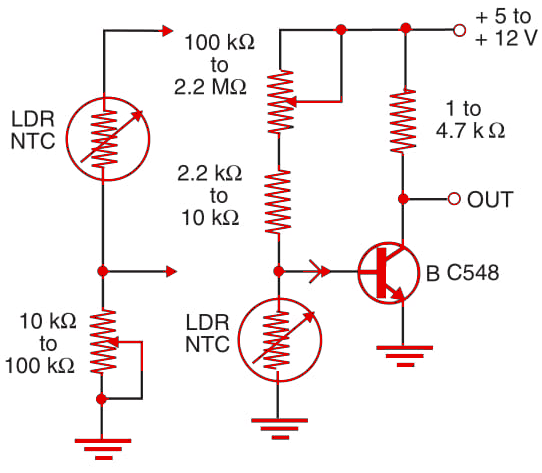The simple block shown in Figure 1 is used to increase the sensitivity of a resistive sensor if it isn’t able to generate enough current to drive blocks such as the ones shown in this section.

The use of a circuit like this one is necessary if, in the low-resistance condition of the sensor, the resistance still is not low enough to provide the current needed by the circuit. For instance, if you are using this block with an LDR and want to detect very weak light sources, you must amplify the signal before this block can be used. In general, this block is recommended when the resistance of a sensor in an application varies in the range from 100 kΩ to infinity.
Resistor R is chosen to give the desired circuit sensitivity. The ideal values are between 2 and 5 times the value of the sensor in the low-resistance condition. In the diagram, we show the blocks in which this circuit can be used to drive the circuit.




